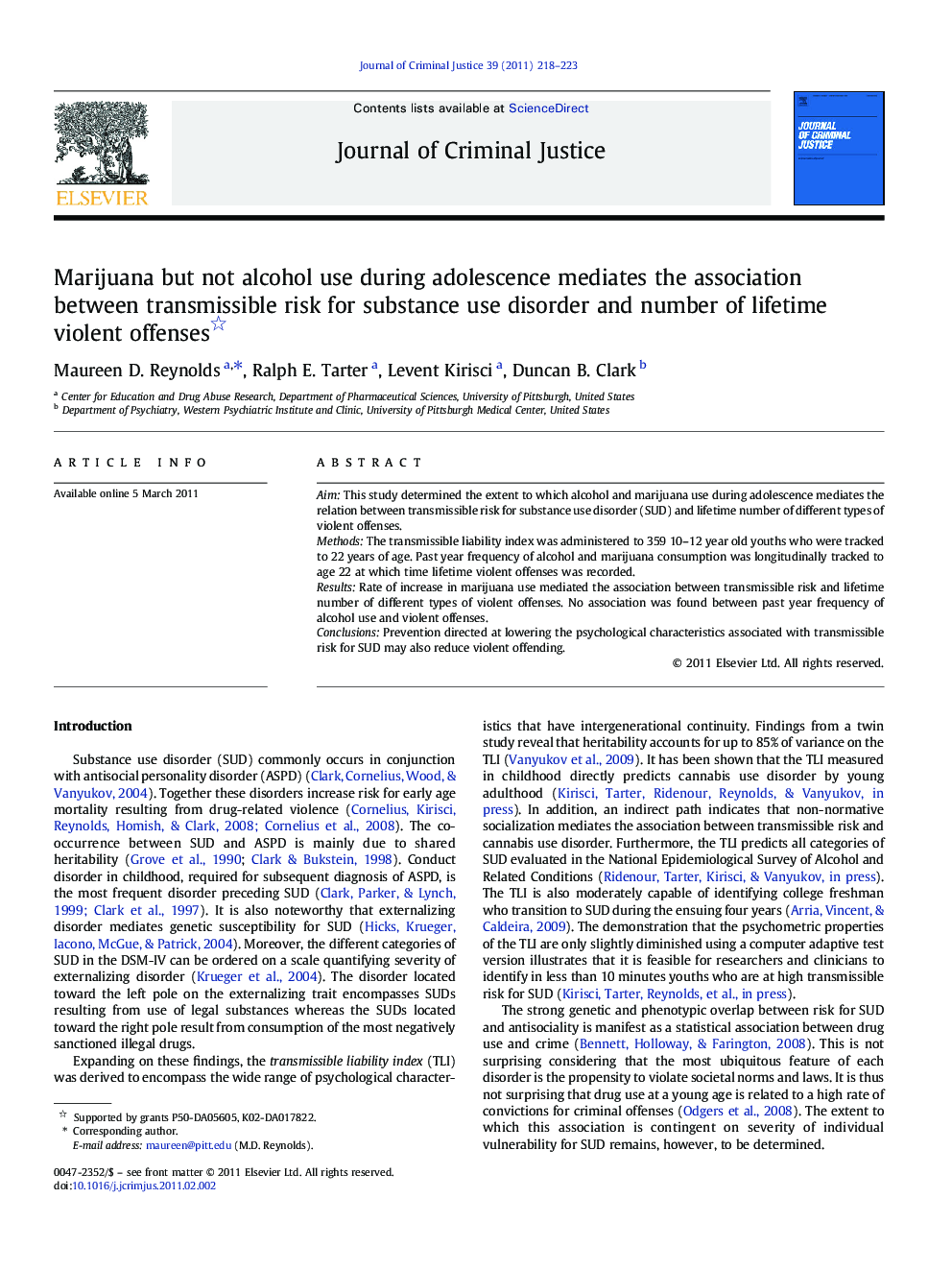| کد مقاله | کد نشریه | سال انتشار | مقاله انگلیسی | نسخه تمام متن |
|---|---|---|---|---|
| 882879 | 912032 | 2011 | 6 صفحه PDF | دانلود رایگان |

AimThis study determined the extent to which alcohol and marijuana use during adolescence mediates the relation between transmissible risk for substance use disorder (SUD) and lifetime number of different types of violent offenses.MethodsThe transmissible liability index was administered to 359 10–12 year old youths who were tracked to 22 years of age. Past year frequency of alcohol and marijuana consumption was longitudinally tracked to age 22 at which time lifetime violent offenses was recorded.ResultsRate of increase in marijuana use mediated the association between transmissible risk and lifetime number of different types of violent offenses. No association was found between past year frequency of alcohol use and violent offenses.ConclusionsPrevention directed at lowering the psychological characteristics associated with transmissible risk for SUD may also reduce violent offending.
Research Highlights
► A measure of SUD risk at age 10–12 predicted violence committed by early adulthood. > The TLI is a significant predictor of violent offending in both genders.
► Increase in marijuana use over the teen years contributes to violent acts by age 22.
► Alcohol use in teen years does not contribute to violent acts by age 22.
Journal: Journal of Criminal Justice - Volume 39, Issue 3, May–June 2011, Pages 218–223